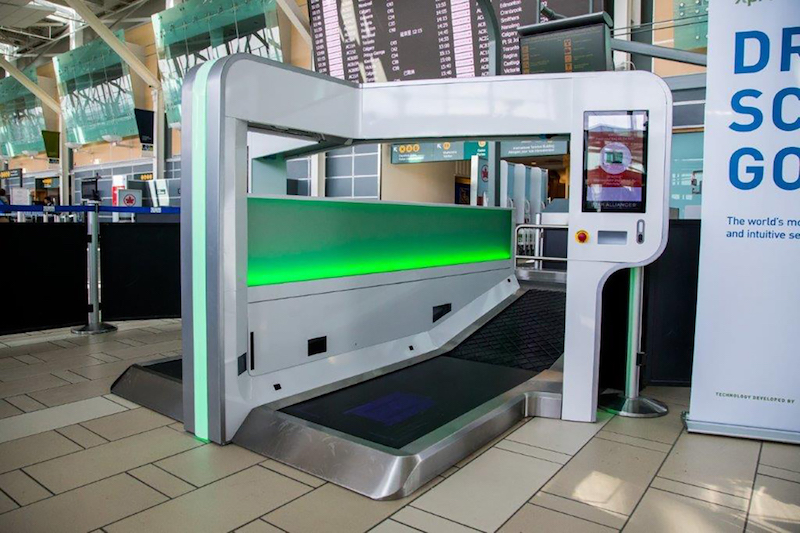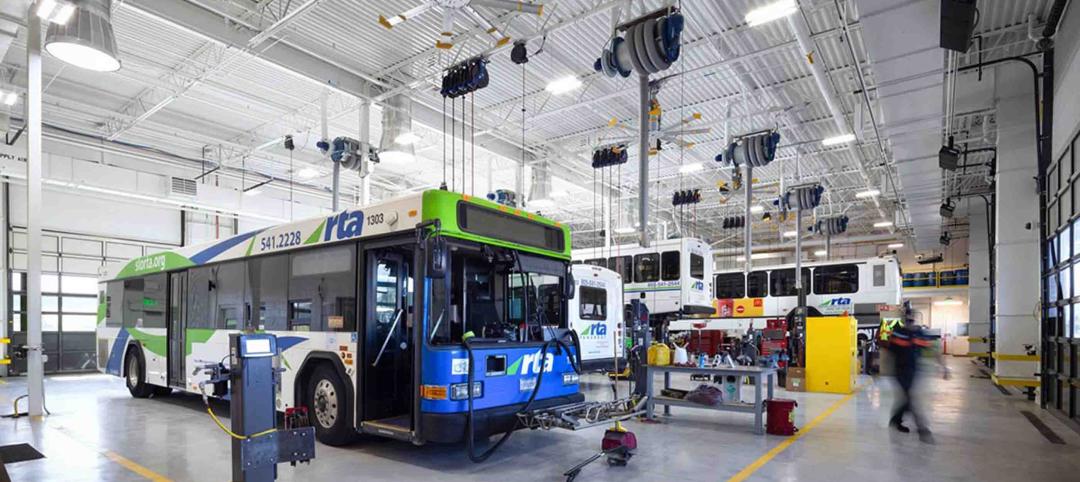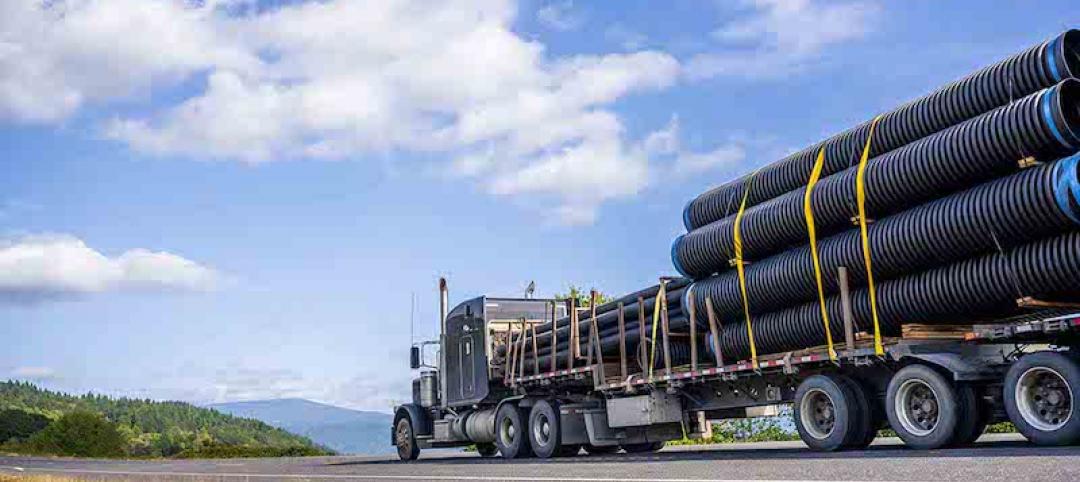Many of us can probably remember a time before self-checkout lines were commonplace in grocery stores. Today, we see self-checkouts in just about every major grocery store chain in North America. Do you embrace this technology and take your checkout destiny into your own hands? Or do you rely on the trusted professional behind the counter?
At many airport terminals today, passengers face a similar decision. Self-service bag drops are becoming increasingly prevalent, and many of the world’s major airports have now implemented them in some form.
Airports are living, breathing facilities with layers upon layers of rules, regulations, and personnel—and they never sleep. Airport baggage handling systems, when designed well, are precisely calibrated to handle high volumes of baggage during peak travel seasons. Many challenges lie ahead for airports that are contemplating how best to introduce new passenger-driven technology to their terminals. You might be surprised at how far-reaching the ripple effect can be when you try to simplify just one process, like baggage.
One of the benefits of self-service bag drops? Shorter queues, which reduces stress for everyone involved.
Self-service bag drops explained
The basic concept is simple: Put the passenger in charge of checking their own baggage.
Anyone who is accustomed to air travel will be familiar with the following four steps for checking in to a flight with checked baggage:
- Print your boarding pass.
- Receive your printed bag tag(s).
- Check your baggage.
- Proceed to security for screening.
Traditionally, a passenger would show up at the airport with photo ID and proceed to a check-in desk, where an airline agent would take care of steps 1 through 3.
Today, many passengers will arrive with boarding passes in hand, having checked in online and already printed their pass at home—or downloaded it to their smartphone. Others will use check-in kiosks at the airport to print both their boarding pass (1) and bag tags (2) immediately upon entering the terminal. Some European- and US-based airlines allow for printing of bag tags at home as well.
Self-service bag drops put steps 1 through 3 into the hands of the passenger. The passenger is required to follow instructions from on-screen prompts given by the check-in kiosk and self-service bag drop. Once the process is complete, conveyor belts whisk away their bags and a message prompts the passenger to proceed to security. One or several airline agents will be posted nearby, either in the open or behind a service desk, to assist passengers.
I’m starting to see self-service bag drops everywhere. Why?
There are two major reasons why so many airports are willing to foot the bill and face the learning curve that inevitably comes with self-service bag drops.
First: Speed. If you’ve ever had to wait in a long queue just to check your baggage, knowing that you haven’t even made it to security yet, then you’ll appreciate this new process. Average check-in times, measured from when you approach the counter to when you leave and walk to security, are typically measured in minutes. With self-service bag drops they are measured in seconds. This results in shorter queues, which reduces stress for everyone involved, and has a positive impact all the way down the line, through security and right to the gate.
Second: Self-service bag drops lead to more efficient airline staffing. Traditional check-in procedure requires that every check-in counter in use be staffed by an airline agent. For an entire row of units, self-service bag drops require only a few airline agents to assist and direct passengers. This frees airline agents to perform other tasks, such as manning the gates on the airside of the terminal.
An example of a self-service bag drop at Vancouver International Airport.
Challenges to implementation
The benefits that come with putting baggage check-in into the hands of passengers are significant, but numerous obstacles must be overcome before they can be fully realized.
— Design: Have you ever tried to figure out the location of the bottleneck that is causing the traffic backup during your morning commute? Sometimes the answer is obvious, but sometimes it is elusive. This is true with baggage handling systems as well. There is always a bottleneck in the system that will cause a backup if bag traffic gets busy enough. Remember how we said that the bag check-in at self-service bag drops is significantly faster on average than your traditional process? That’s a wonderful benefit right up until the point where the system backs up all the way to the counters because bags are being checked in at such a rapid pace. But good baggage systems design will significantly reduce the likelihood of baggage gridlock. Providing multiple routes for bags to flow through the conveyor system and implementing carefully considered contingency plans are the tools designers use to minimize backups and reduce their impact.
— Operational procedures: Airline agents are conditioned by their training and experience to help passengers with every aspect of the baggage check-in procedure. The self-serve process requires that they let you, the passenger, do the work. This almost never happens immediately. For the first few weeks after a self-service bag drop goes into live operation, I watch as airline agents personally check in every single passenger using the new system. Initially, this isn’t an issue. It provides the airline agents with the experience necessary to become expertly familiar with the new process, and they’ll need that expertise to troubleshoot any issues a passenger may encounter. The problem is that it often slows check-in times and reduces the efficiency that the new technology is designed to provide. Providing a thorough training program for all airline agents before the units go into live operation is crucial to realizing the full benefits of self-service bag drops.
— Safety: By far, this is the most important challenge that must be addressed. The main concern is that a child will jump onto the conveyor belts and, before anyone notices, ride them through the opening in the wall and down into the larger conveyor system. Such occurrences are rare, but it has happened. We provide emergency stops on every check-in desk and, when a self-service bag drop is installed, we like to include additional emergency stops that face passengers, so anyone can stop the conveyor belts at any time. Once self-service bag drops are installed, there will be fewer airline agents on the floor, so we won’t be able to rely solely on humans as a safety precaution. Every situation is different, but self-service bag drop systems are expected to employ sensors that detect human intrusion. If these sensors are flagged, they will immediately stop the system. Before a unit is put into service, its safety features are tested extensively. Technology is improving, and new detection systems are hitting the market that can sense any motion on a conveyor belt that isn’t caused by your luggage. Safety is always the priority, and these recent improvements to safety technology are very encouraging.
—Passengers: You, the passenger, are at the heart of it all. The self-serve system will succeed or fail based on whether the process is intuitive enough for you to figure it out quickly. I’m continually amazed at your ingenuity. We often worry that the procedure is too complex, and that we haven’t communicated the step-by-step process clearly enough. But then I’ll watch the first flight check-in to a new system. For every passenger that needs help, four or five others breeze right through.
If this were an exhaustive list, we could go on to talk about the challenges of bag jams, software programming, equipment failure, system error reporting, and baggage systems operator response times. Every airport situation is unique, and we are constantly confronted with new challenges as we try to speed up airport baggage check-in.
Self-service bag drops are becoming increasingly prevalent, and many of the world’s major airports have implemented them in some form.
Onward and upward
So much of our modern infrastructure has been the subject of entire lifetimes of intense scrutiny, and airport baggage handling systems are no exception. The next time you check your own bags into a conveyor system at an airport terminal, perhaps you’ll notice some detail you hadn’t before. When you do, consider the fact that a team of project managers, engineers, and designers probably spent many hours poring over that detail and trying to make it harmonize with the thousands of moving parts that are the people, processes, and technology that bring an airport to life.
More from Author
Stantec | Apr 18, 2024
The next destination: Passive design airports
Today, we can design airports that are climate resilient, durable, long-lasting, and healthy for occupants—we can design airports using Passive House standards.
Stantec | Mar 18, 2024
A modular construction solution to the mental healthcare crisis
Maria Ionescu, Senior Medical Planner, Stantec, shares a tested solution for the overburdened emergency department: Modular hub-and-spoke design.
Stantec | Nov 20, 2023
8 strategies for multifamily passive house design projects
Stantec's Brett Lambert, Principal of Architecture and Passive House Certified Consultant, uses the Northland Newton Development project to guide designers with eight tips for designing multifamily passive house projects.
Stantec | Apr 10, 2023
Implementing human-centric design in operations and maintenance facilities
Stantec's Ryan Odell suggests using the human experience to advance OMSF design that puts a focus on wellness and efficiency.
Stantec | Jul 6, 2022
5 approaches to a net zero strategy that communities can start right now
Whether your community has started on a plan or is still considering net zero, now is the time for all of us to start seriously addressing climate change.
Stantec | Feb 14, 2022
5 steps to remake suburbs into green communities where people want to live, work, and play
Stantec's John Bachmann offers proven tactic for retrofitting communities for success in the post-COVID era.
Stantec | Feb 8, 2022
How gaming technology is changing the way we design for acoustics
Adding 3D sound from gaming engines to VR allows designers to represent accurate acoustic conditions to clients during design.
Stantec | Dec 15, 2021
EV is the bridge to transit’s AV revolution—and now is the time to start building it
Thinking holistically about a technology-enabled customer experience will make transit a mode of choice for more people.
Stantec | Sep 3, 2021
Passports to a net-zero carbon future
How materials passports can help designers achieve social value and net-zero carbon.
Stantec | Aug 25, 2021
The mall of the future: Less retail, more content
For the mall to survive, it will need to embrace nontraditional uses and “messy vitality.” Here’s how to do it.
















